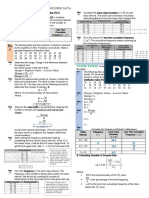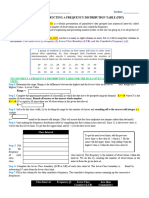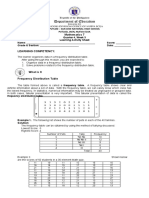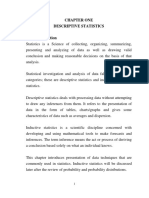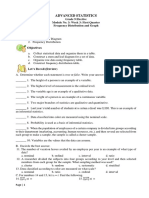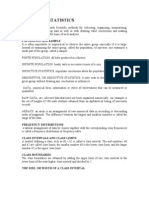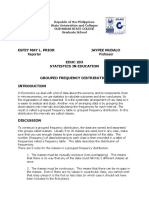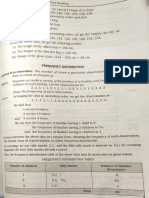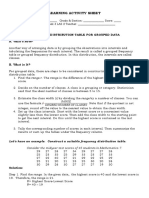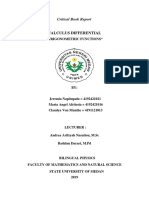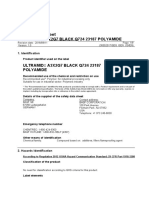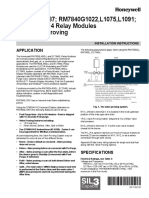0% found this document useful (0 votes)
38 views35 pagesFrequency Distribution Table
The document outlines a classroom activity called 'Too Many Numbers!' where students compete to solve for quartiles quickly. It includes instructions on creating frequency distribution tables for grouped data and emphasizes the importance of measures of position like quartiles, deciles, and percentiles. Additionally, it provides examples and steps for constructing frequency distribution tables using given datasets.
Uploaded by
razeldulaugonCopyright
© © All Rights Reserved
We take content rights seriously. If you suspect this is your content, claim it here.
Available Formats
Download as PDF, TXT or read online on Scribd
0% found this document useful (0 votes)
38 views35 pagesFrequency Distribution Table
The document outlines a classroom activity called 'Too Many Numbers!' where students compete to solve for quartiles quickly. It includes instructions on creating frequency distribution tables for grouped data and emphasizes the importance of measures of position like quartiles, deciles, and percentiles. Additionally, it provides examples and steps for constructing frequency distribution tables using given datasets.
Uploaded by
razeldulaugonCopyright
© © All Rights Reserved
We take content rights seriously. If you suspect this is your content, claim it here.
Available Formats
Download as PDF, TXT or read online on Scribd
/ 35





